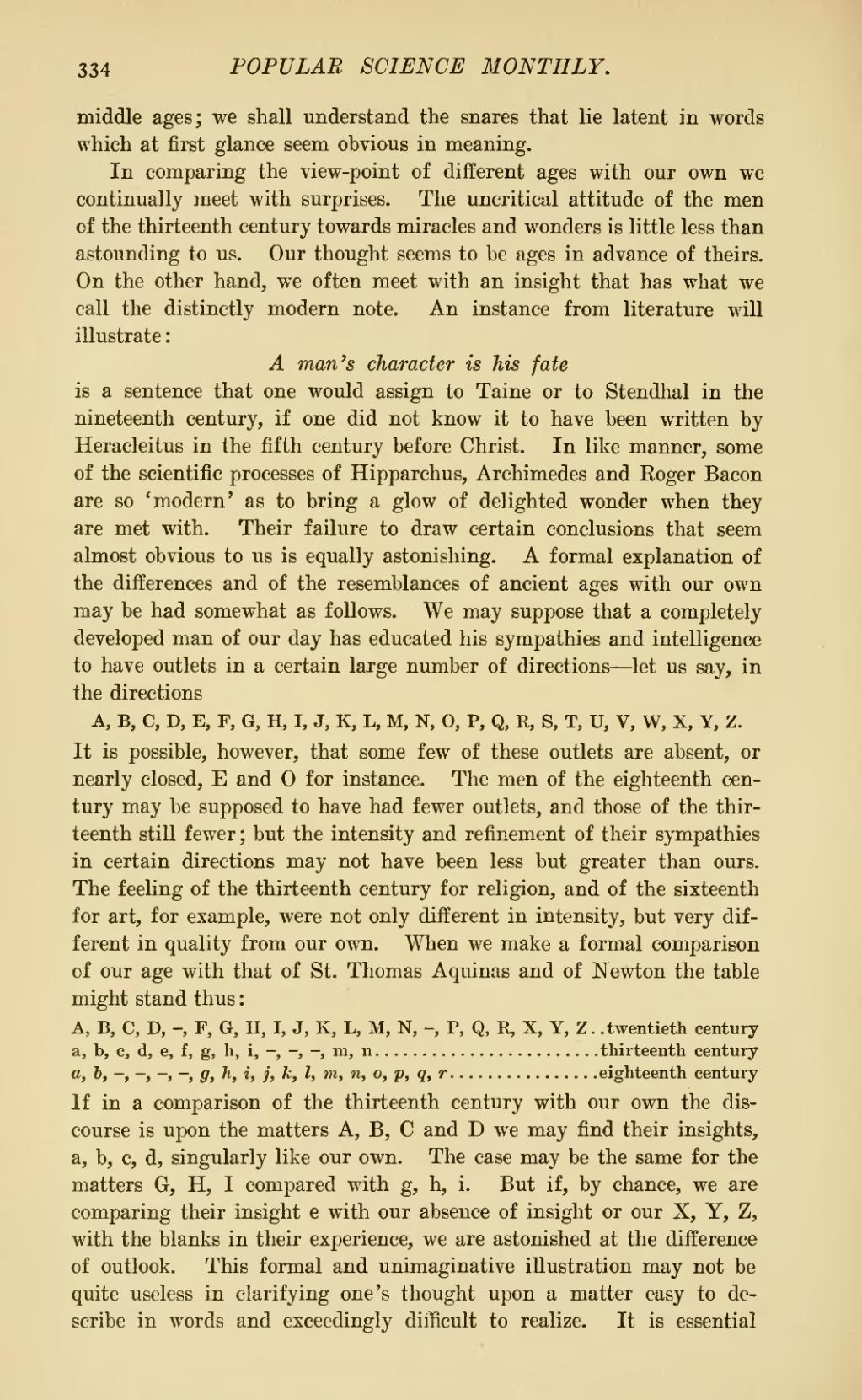middle ages; we shall understand the snares that lie latent in words which at first glance seem obvious in meaning.
In comparing the view-point of different ages with our own we continually meet with surprises. The uncritical attitude of the men of the thirteenth century towards miracles and wonders is little less than astounding to us. Our thought seems to be ages in advance of theirs. On the other hand, we often meet with an insight that has what we call the distinctly modern note. An instance from literature will illustrate:
A man's character is his fate
is a sentence that one would assign to Taine or to Stendhal in the nineteenth century, if one did not know it to have been written by Heracleitus in the fifth century before Christ. In like manner, some of the scientific processes of Hipparchus, Archimedes and Roger Bacon are so 'modern' as to bring a glow of delighted wonder when they are met with. Their failure to draw certain conclusions that seem almost obvious to us is equally astonishing. A formal explanation of the differences and of the resemblances of ancient ages with our own may be had somewhat as follows. We may suppose that a completely developed man of our day has educated his sympathies and intelligence to have outlets in a certain large number of directions—let us say, in the directions
A, B, C, D, E, F, G, H, I, J, K, L, M, N, 0, P, Q, R, S, T, U, V, W, X, Y, Z.
It is possible, however, that some few of these outlets are absent, or nearly closed, E and O for instance. The men of the eighteenth century may be supposed to have had fewer outlets, and those of the thirteenth still fewer; but the intensity and refinement of their sympathies in certain directions may not have been less but greater than ours. The feeling of the thirteenth century for religion, and of the sixteenth for art, for example, were not only different in intensity, but very different in quality from our own. When we make a formal comparison of our age with that of St. Thomas Aquinas and of Newton the table might stand thus:
A, B, C, D, –, F, G, H, I, J, K, L, M, N, –, P, Q, R, X, Y, Ztwentieth century
a, b, c, d, e, f, g, h, i, –, –, –, m, nthirteenth century
a, i, –, –, –, –, g, h, i, j, k, l, m, n, o, p, q, reighteenth century
If in a comparison of the thirteenth century with our own the discourse is upon the matters A, B, C and D we may find their insights, a, b, c, d, singularly like our own. The case may be the same for the matters G, H, I compared with g, h, i. But if, by chance, we are comparing their insight e with our absence of insight or our X, Y, Z, with the blanks in their experience, we are astonished at the difference of outlook. This formal and unimaginative illustration may not be quite useless in clarifying one's thought upon a matter easy to describe in words and exceedingly difficult to realize. It is essential

